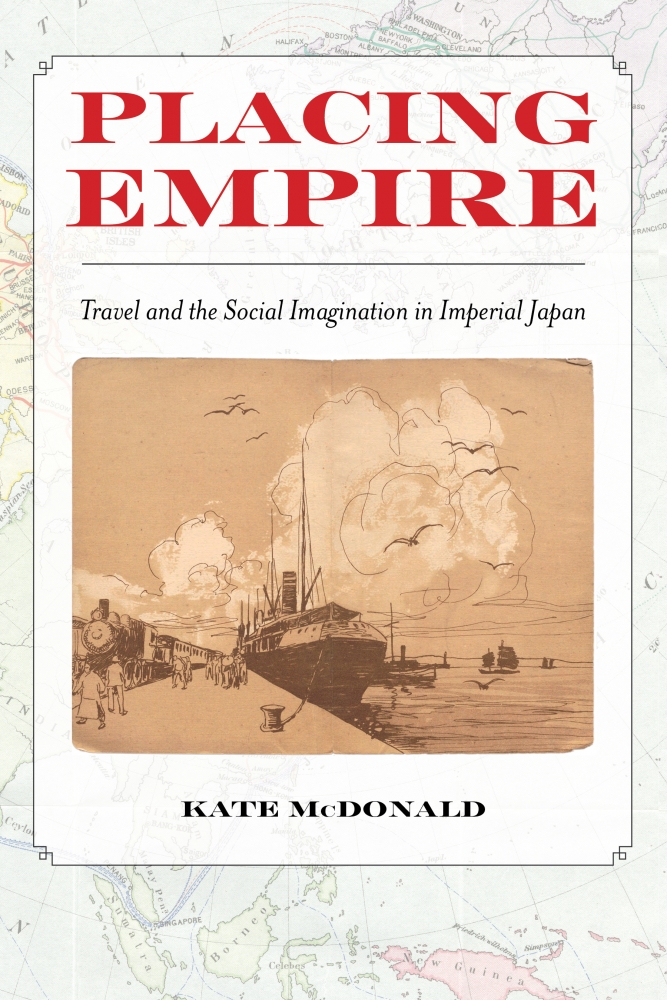
Empire Building

As Japan sought to expand and maintain its colonial empire in Korea, Manchuria and Taiwan, the government discovered a successful way to make these foreign lands seem more “Japanese” and acceptable to its own citizens: educational tourist trips to the colonies.
In fact, tourism was essential to establishing and maintaining the Japanese empire from the 1800s to the 1940s. That’s according to a new book, “Placing Empire: Travel and the Social Imagination in Imperial Japan” (UC Press, 2017) by Kate McDonald, an assistant professor of modern Japanese history at UC Santa Barbara.
While “Placing Empire” focuses on Japan and its colonies, McDonald said her book sends a greater message about the need to re-examine the morality and effects of colonialism as people visit places once dominated by another nation or culture. “This book is less about Japan than the world we live in today,” McDonald said. “Colonialism is alive and well.
“When you are touring California’s mission system, for example, think about how the stories you are learning through this process are justifying the ongoing colonization of California,” she continued. “Think about how these narratives are making colonialism part of the dead past rather than the living present. Tourism is not just a story about the Japanese empire. It’s a story of the 20th and 21st centuries.”
In her research, McDonald studied accounts of Japanese travelers and also government tour guidebooks from the late 1800s to the 1960s. In “Placing Empire” she explores what Japanese travelers saw when they went to colonized Korea, Manchuria and Taiwan, and how Japanese travelers in the early 1900s remembered the transformation of these lands to Japanese colonies. Taiwan became part of the Japanese empire in 1895; Korea became a formal part of Japan in 1910; and Manchuria was an informal colony of Japan until 1932, when members of the Japanese military created a puppet state of Japan called Manchukuo.
Hundreds of thousands of Japanese were encouraged to visit the colonies as their government sought to expand its empire and influence its people to accept those areas as a part of Japan. Travel was expensive at the time, McDonald noted, and the trips were associated more with education than leisure. The standard itinerary offered by the Japan Tourist Bureau took people to locales such as ports, soybean oil factories, sugar plantations and government buildings, all of which Japanese tourists viewed as markers of progress in colonies becoming more like Japan.
For students looking to improve their employment prospects, government-discounted tours sometimes resulted in job offers in Seoul or Taipei, McDonald added.
Initially, Japanese travelers were pleased to see the changes taking place in the colonies; but they denigrated the local people. “They figured the lands would modernize and colonized people would either come along or die off,” McDonald continued.
After World War I, as anti-colonial movements emerged in the global political consciousness, attitudes shifted and people began to question the morality of Japan being a colonial empire, she explained . “You start to see people focus on appreciating cultural diversity, talking about going to Korea to see authentic culture, going to Taiwan to see indigenous people in the jungle,” McDonald said. “This was also a way of making colonialism safe for this new world order. The tourism industry started talking about these places as the national exotic rather than the colonial frontier.”
Ultimately, the Japanese Empire and its colonial tourism industry ended in 1945 when Japan’s defeat in World War II resulted in the allies severing Japan’s control over Taiwan, Korea and Manchuria.
“Placing Empire” is available as a free, open access e-book through UC Press.



